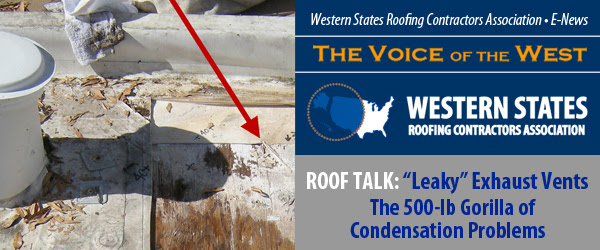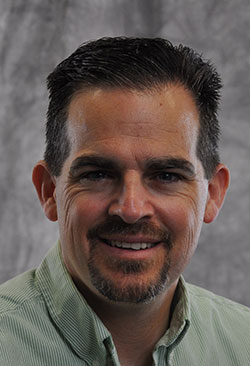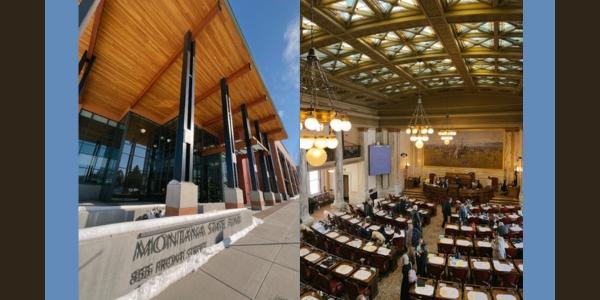Leaky Exhaust Vents – The 500-lb Gorilla of Condensation Problems

Exhaust vents are the proverbial 500-lb gorilla in the room.
By Phil Dregger - PE, Technical Roof Services.
Many factors contribute to excessive condensation in low slope membrane roof systems installed over wood decks with insulation below; high interior relative humidity (RH), high roof reflectance[1], and especially air intrusion[2]. One contributor - the impact of warm humid air leaking out the ends of improperly terminated exhaust vents - is like the proverbial 500-lb gorilla. We are keenly aware he is in the “reroof” room with us but have done a pretty good job of ignoring him. When this big guy creates a problem, however, roof professionals are often asked to explain why they did not “correct” the improper exhaust vent termination conditions before installing new flashing assemblies over them.
This article will explain why complete discharge of exhaust air - especially gas combustion products - is so important, will review code requirements for termination of exhaust vents, identify tell-tale signs of existing condensation problems, and will offer ways to avoid exhaust vent-related condensation problems.
Although broken or disconnected exhaust vents can pose an even more serious problem, this article will focus on how improper termination of exhaust vents can contribute to excessive condensation in low-slope membrane roofs. All photos in this article are courtesy of DNG Group Companies - Technical Roof Services and Pacific Building Consultants - and show projects located in California in ASHRAE Climate Zone 3.
Log in to read more at the WSRCA website. Not a member? Learn more about joining here.






















Comments
Leave a Reply
Have an account? Login to leave a comment!
Sign In